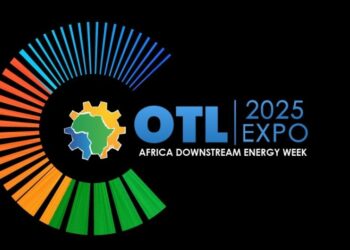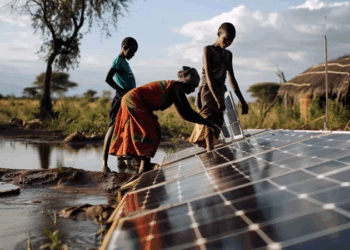Nigeria, according to reports has a vast treasure trove of renewable energy resources, yet these resources remain largely untapped and the potential for hydropower energy generation in Nigeria is massive.
Hydropower’s total exploitable potential is estimated to be over 14,120 MW, equating to more than 50,800 GWh of electricity per year.
According to the International Hydropower Association report in 2018, Nigeria’s hydropower has an installed capacity of 2,062 MW, with approximately 85 per cent of that capacity yet to be built, providing solutions to current power shortages.
The most significant hydropower sources in Nigeria are Kainji and Jebba dams. Hydropower remains the world’s most important source of renewable electricity production and a key player in reducing the amount of gaseous carbon in the power system and enhancing system stability.
In 2008, substantial numbers of hydropower development projects with a total capacity of 100,000 MW had been started or were in the works around the world.
Asia has made the most significant contribution to current hydropower growth. South America, Africa, and Europe have all made significant contributions.
Africa has an installed hydropower capacity of over 37 GW and the highest untapped potential across the world.
Less than 3 GW has been exploited feasibly and the importance of generating electricity from hydro energy to help development and growth in the Nigerian economy is highlighted by so many works.
According to GlobalData, hydro capacity accounted for 16.3 per cent of total power plant installations globally in 2022, with total recorded hydro capacity of 1,387GW.
This is expected to contribute 11.7 per cent by the end of 2030 with capacity of installations aggregating up to 1,557GW. Of the total global hydro capacity, 0.17 per cent is in Nigeria.
Nigeria’s Hydropower Potential
There are five largest upcoming hydro power plants in Nigeria, according to GlobalData’s power plants database.
The Mambilla is a 3,050MW hydro power project located in Taraba, and the project is expected to enter commercial operation in 2027.
Markudi is a 1,650MW hydro power project in Benue, Nigeria. The project is expected to come online by 2033 and is currently in announced stage.
The 980MW Kainji is located in Niger. It is owned by Mainstream Energy Solutions. The hydro project is currently in partially active stage. Mainstream Energy Solutions is developing this project.
Also, the Lokoja is a 750MW hydro power project.
The project is currently in announced stage and post completion of construction, the project is expected to get commissioned by 2033.
The 578.40MW hydro project, Jebba is being developed by RusHydro International; Mainstream Energy Solutions. The project is currently in partially active stage. Mainstream Energy Solutions is the owner of the project.
Climate Change Risk Potential
As countries push for green energy transition attempts to exploit hydropower by governments is facing challenges due to climate change and drought which is ravaging most parts of Africa.
Droughts linked to climate change are reducing water flow in rivers and reservoirs, causing significant drops in hydropower production worldwide.
Countries heavily reliant on hydropower, like Africa, face potential energy shortages if droughts become more frequent.
The decline of hydropower highlights the need for a more diverse energy mix that includes alternative renewable energy sources to ensure reliable electricity generation.
Nigeria is one of the countries relying on hydropower and had recently increased power generation with the addition of 700MW newly commissioned Zungeru hydropower plant.
According to reports clean hydropower is produced in several parts of the world with around 60 percent coming from China, Brazil, the United States, Canada, Russia, India, Norway, Venezuela, Sweden, and Japan.
Now, more countries want to exploit their hydropower potential as governments worldwide push for a green transition.
However, the industry faces a multitude of challenges, mainly associated with climate change. Recent periods of drought in several countries around the globe have driven down hydropower production rates and threaten future output.
Hydropower is one of the oldest forms of renewable energy production. It uses the flow of water to power a generator and produce electricity.
Companies traditionally place hydroelectric power plants on or near a water source. The volume of the water flow and the change in elevation from one point to another determines the amount of energy available in a moving water. The greater the flow of water or the greater the elevation change the greater the quantity of electricity that can be produced.
Meanwhile, in the African region, hydropower is the largest source of renewable energy on the continent, contributing almost one-quarter of the total electricity generation in sub-Saharan Africa.
Several countries are more at risk than when it comes to a decrease in hydropower generation due to climate change, as they have few alternative energy sources available.
These include the Democratic Republic of Congo, Ethiopia, Uganda, Zambia, Mozambique and Sierra Leone. This demonstrates the severe need for the development of a more diverse energy mix across the continent.
There is significant potential to develop more hydropower in several regions of the world, particularly in Africa. However, the worsening effects of climate change are threatening the previously reliable renewable energy source. If droughts happen more frequently, those countries affected will have a reduced hydropower capacity, meaning they may come to rely on alternative energy sources or energy imports from other countries?
There are two types of conventional hydropower operations. The first is the run-of-the-river system, which relies on the force of the river’s currents to power a turbine. Some of these operations use a weir to divert the water towards the turbines.
The second is the storage system, which uses reservoirs created by dams on streams and rivers to collect water that can then be released through turbines, providing a high level of pressure. Pumped-storage hydropower facilities are an example of a less conventional hydropower system where water is pumped from the source to a storage reservoir higher up. The water can then be released from an upper reservoir to hydro turbines below. However, this process requires more electricity than conventional facilities.
The amount of available water greatly affects hydropower production. For example, the quantity of rainwater that drains into rivers and streams in any particular area determines the amount of water available for hydropower production. This varies by season and can also shift long-term as precipitation patterns change. Droughts, therefore, can have an extremely negative impact on hydropower production.
The energy analyst Ember believes around 8.5 per cent of hydroelectricity generation loss is around associated with droughts.





